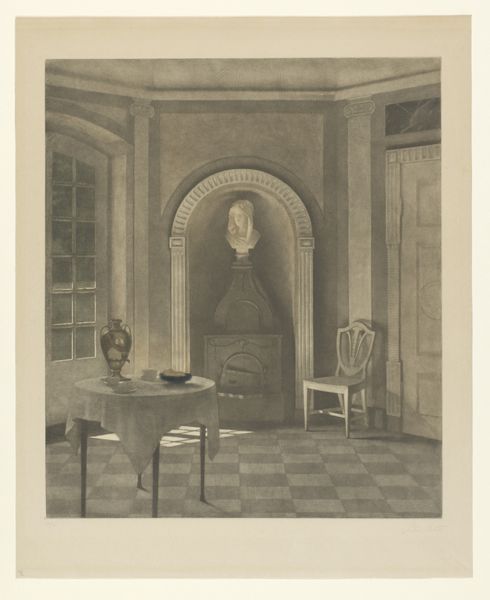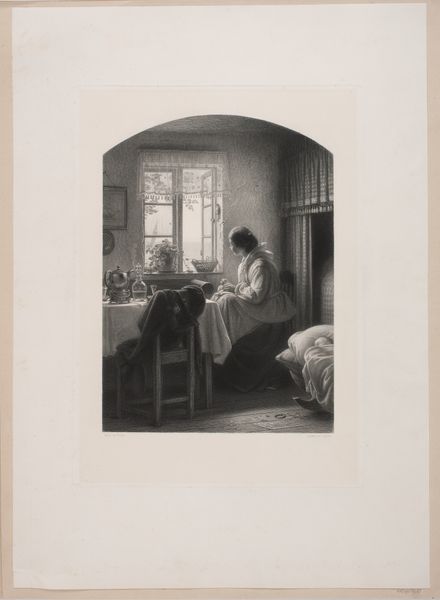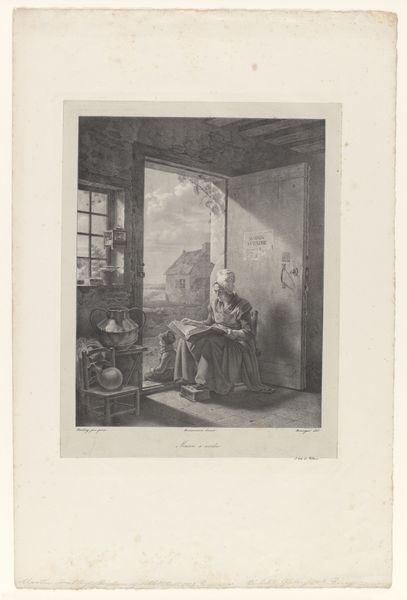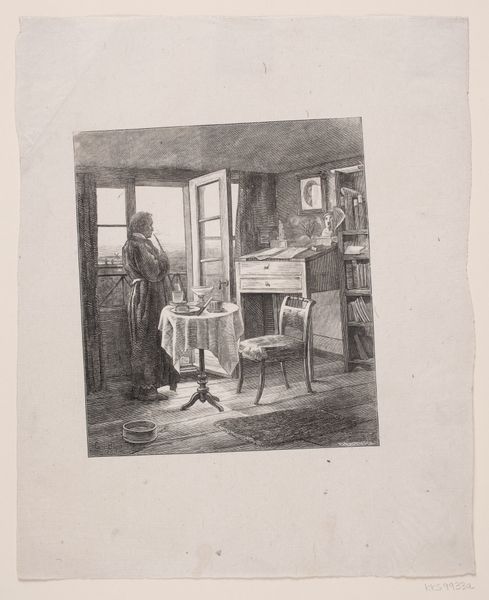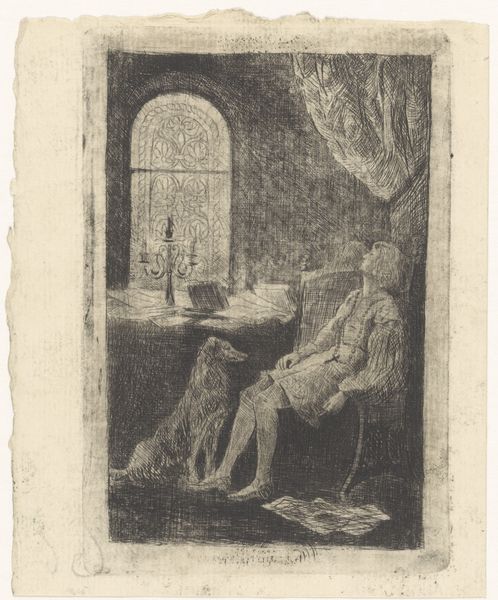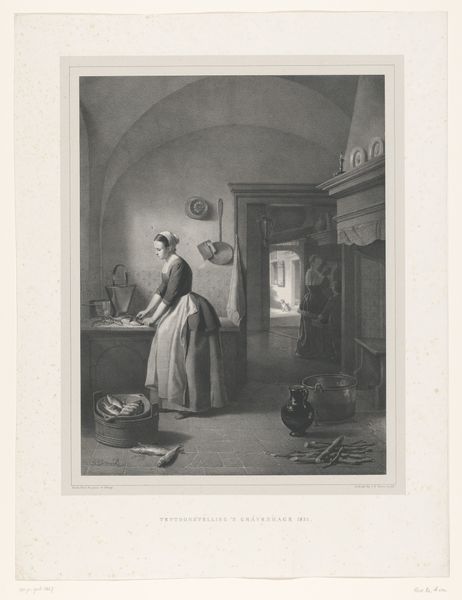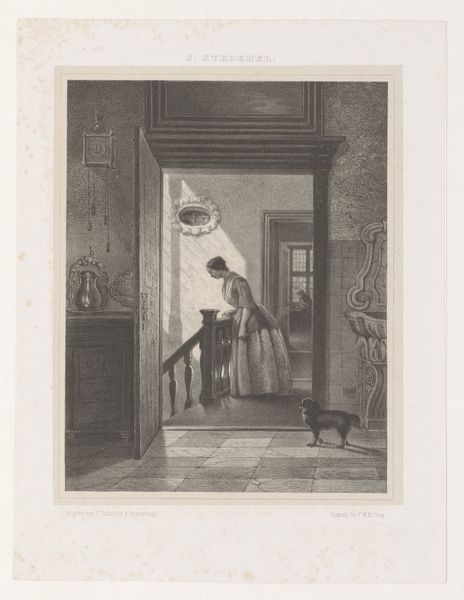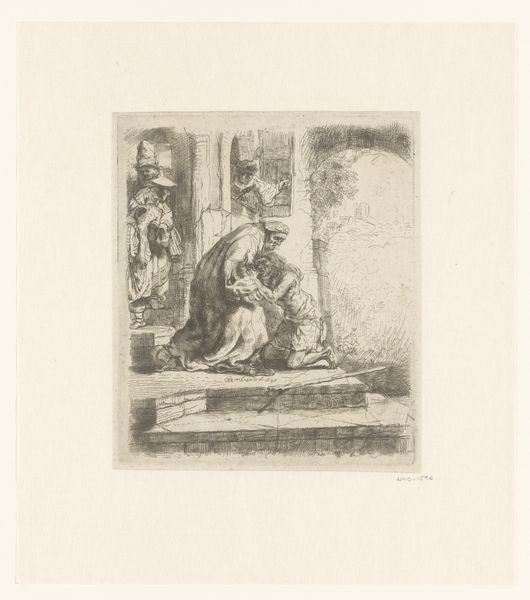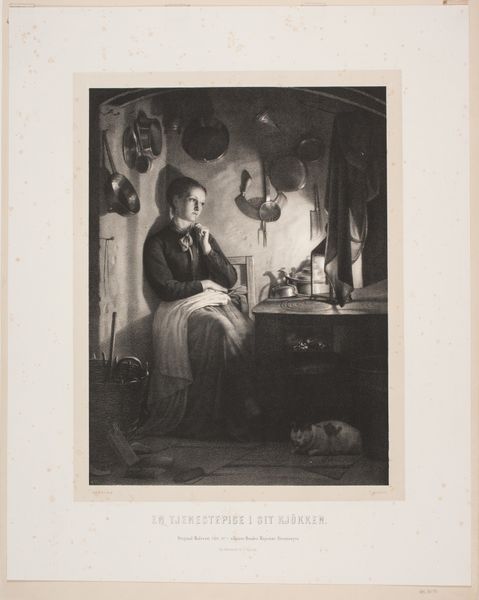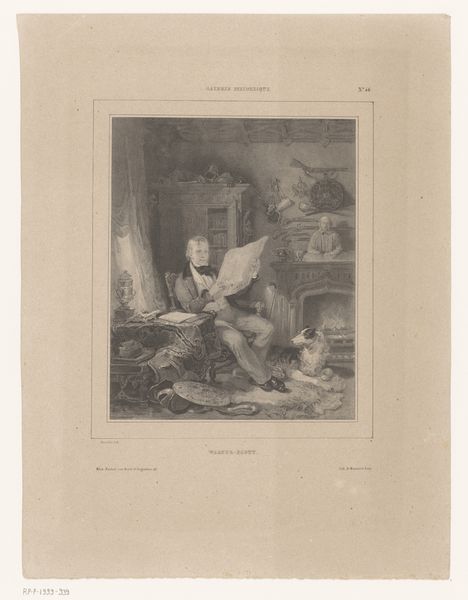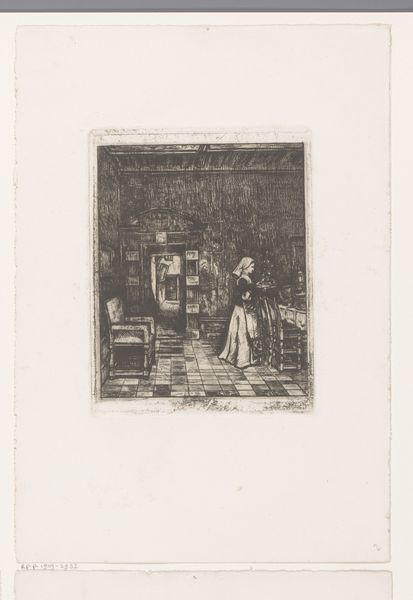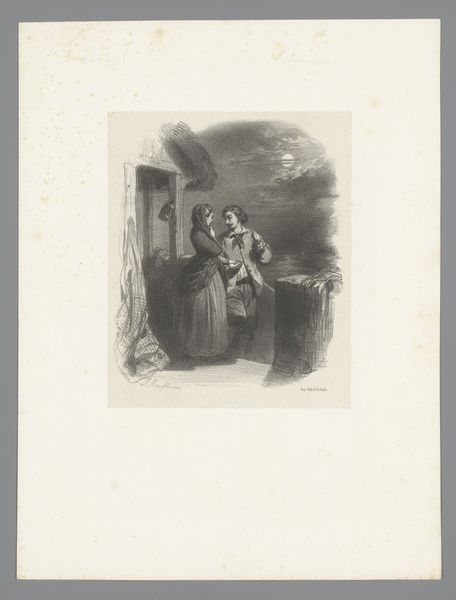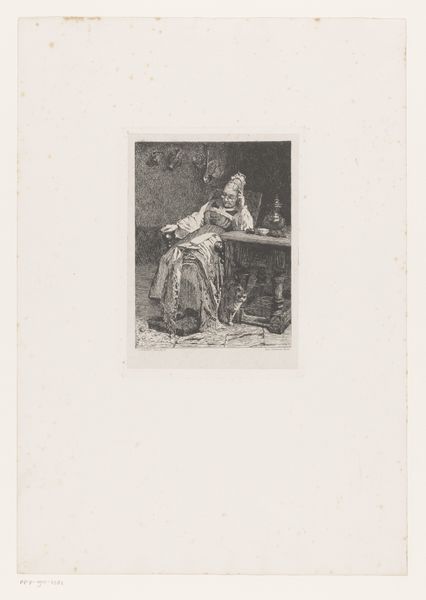
drawing, paper, graphite
#
drawing
#
paper
#
graphite
#
genre-painting
#
academic-art
Dimensions: height 446 mm, width 345 mm
Copyright: Rijks Museum: Open Domain
Editor: This is "Kloosterkamer met non," or "Cloister Room with Nun," created sometime between 1880 and 1936. It’s a graphite drawing on paper currently held at the Rijksmuseum. It feels quiet, almost solemn, with the lone figure of the nun. What stands out to you? Curator: I see the stark materiality of this drawing reflecting a broader social context. Look at the labor implied in its creation: the hand of the artist carefully applying graphite to paper, painstakingly rendering the scene. It speaks to a slower, more deliberate pace of production compared to the industrialized world emerging at that time. What does the nun's solitary activity represent in that context? Editor: I guess it suggests a detachment from that industrialization? Maybe a conscious choice to resist the rapid changes. Do the materials themselves offer clues about that detachment? Curator: Precisely! Graphite, a humble material, allows for mass reproduction via prints, making the image accessible. Paper, while ubiquitous, was still a commodity connected to specific modes of production. Considering these factors challenges the notion of "high art" by blurring boundaries between skilled craft and artistic expression. Think about the kind of labor represented by this austere lifestyle as opposed to labor during the industrial revolution. Editor: So, instead of just seeing it as a peaceful scene, you're prompting me to think about the drawing itself as a product of labor and a comment on different kinds of labor? I see now the ways in which material, technique, and representation intertwine. Curator: Exactly. By looking closely at the 'how' and 'what' of its making, we gain insights into the socio-economic forces shaping the artist's perspective, and that of the nun within the drawing. The image is, ultimately, also a product for consumption. Editor: Thanks! That perspective shifts the focus from simply observing to really analyzing the work within a broader world.
Comments
No comments
Be the first to comment and join the conversation on the ultimate creative platform.
